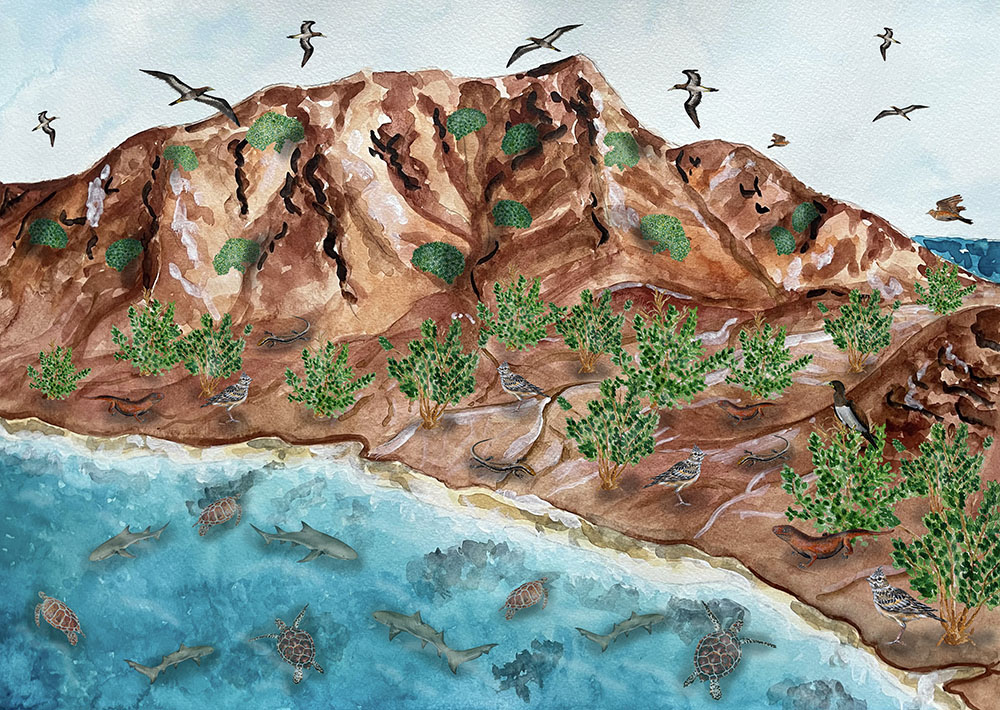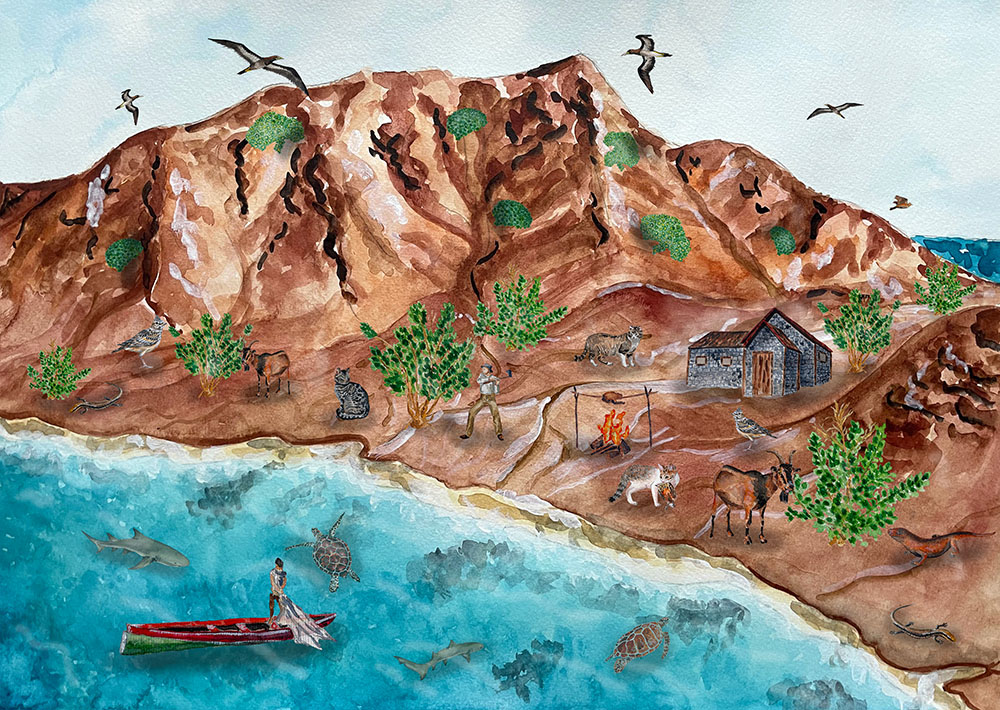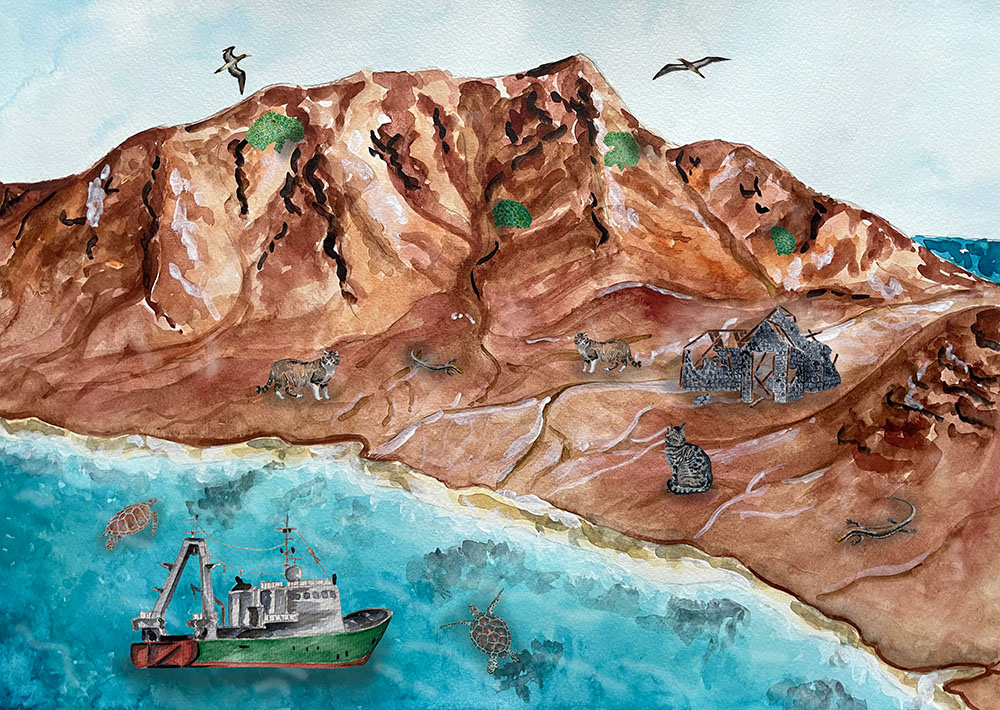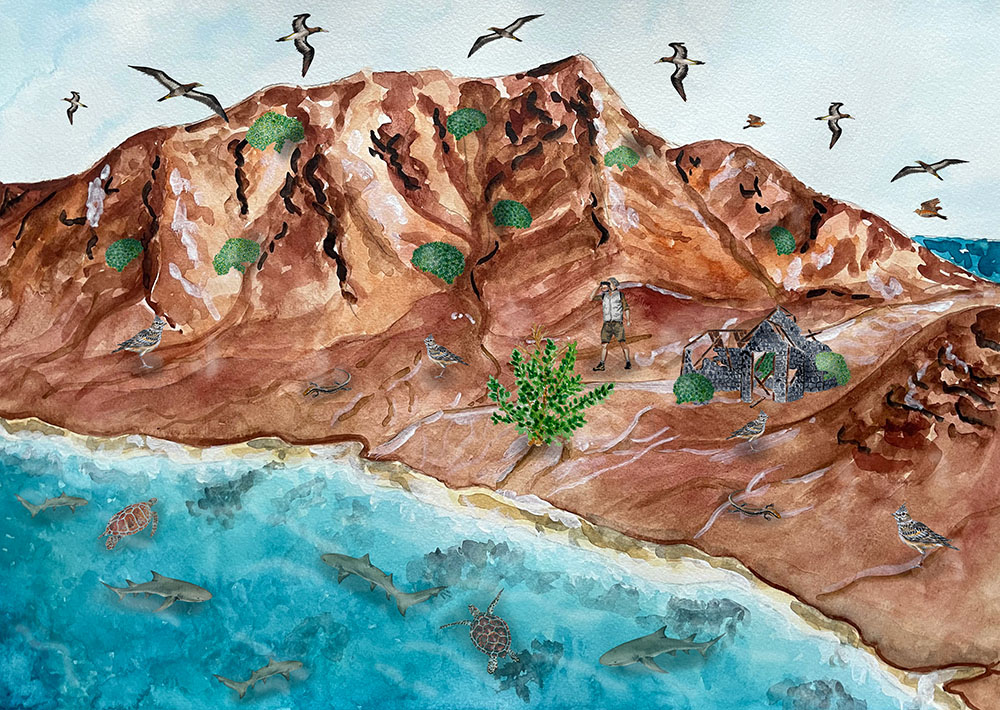Biodiversity Evolution⎢Cape Verde⎢2021
The Desert Islands
Ecosystem
In partnership with Biosfera

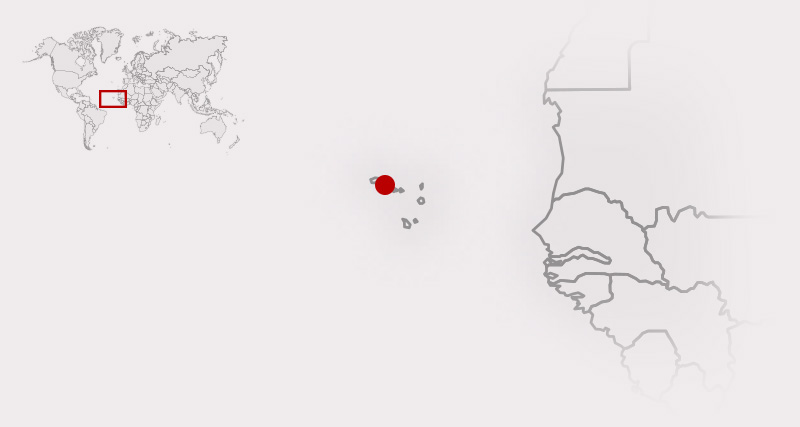
The Desert Islands, appropriately named, comprise three arid islands situated in the northern region of the Cape Verde archipelago. Forming a nature reserve, these islands resemble distant planets with their barren landscapes. Nevertheless, they are far from lifeless. Amidst the short vegetation, a vibrant ecosystem thrives, encompassing seabirds, marine life, and lizards, providing ample fascination for naturalists.
Yet, this ecosystem has undergone significant evolution over time, from its original state before human colonization in the 16th century to its current form. When compared to the era of Darwin’s visit in 1832, the landscapes we observe today would undoubtedly differ.
Darwin’s observations
The volcanic fires of a past age, and the scorching heat of a tropical sun, have in most places rendered the soil unfit for vegetation. The country rises in successive steps of table-land, interspersed with some truncate conical hills, and the horizon is bounded by an irregular chain of more lofty mountains.
The island would generally be considered as very uninteresting; but to any one accustomed only to an English landscape, the novel aspect of an utterly sterile land possesses a grandeur which more vegetation might spoil. A single green leaf can scarcely be discovered over wide tracts of the lava plains; yet flocks of goats, together with a few cows, contrive to exist.
– Charles Darwin, Voyage of the Beagle, 1832, writing about the island of Santiago (south of the the archipelago – today unsafe to visit for sailing vessels)

Darwin’s observations
The volcanic fires of a past age, and the scorching heat of a tropical sun, have in most places rendered the soil unfit for vegetation. The country rises in successive steps of table-land, interspersed with some truncate conical hills, and the horizon is bounded by an irregular chain of more lofty mountains.
The island would generally be considered as very uninteresting; but to any one accustomed only to an English landscape, the novel aspect of an utterly sterile land possesses a grandeur which more vegetation might spoil. A single green leaf can scarcely be discovered over wide tracts of the lava plains; yet flocks of goats, together with a few cows, contrive to exist.
– Charles Darwin, Voyage of the Beagle, 1832, writing about the island of Santiago (south of the the archipelago – today unsafe to visit for sailing vessels)
Santa Luzia’s Fresco
We collaborated with the conservation association Biosfera and the scientist Pedro Geraldes, specialist in seabirds at the Portuguese Society for the Study of Birds (SPEA), to establish 600 years of comparison of the ecosystem of the island of Santa Lucia. The illustrations were created by Morgane Amorin, and offer us an extraordinary journey through time.
The scene chosen for the fresco is a small bay south of the island of Santa Luzia. It is here that an attempt to occupy the land has been carried out over the last centuries. Today it is still a privileged place for passing ships, which can drop anchor sheltered from the prevailing winds blowing from the northeast.
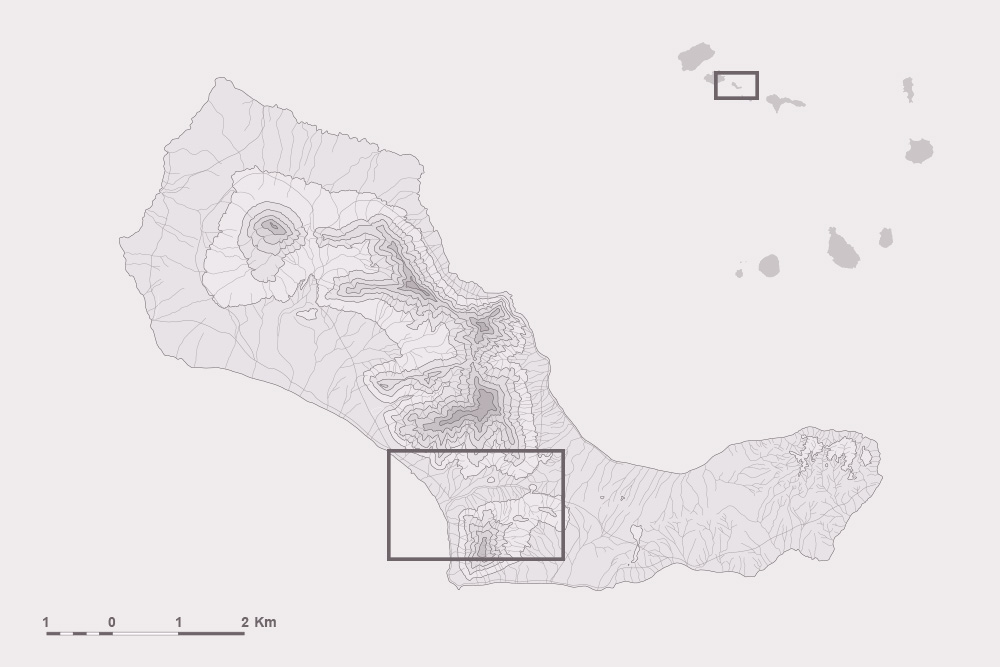

1600 • Nature untouched by man
Discovered by Portuguese explorers in 1456, the Cape Verde archipelago was uninhabited by humans before their arrival. Among the islands, Santa Luzia, though smaller than São Vicente or São Nicolau, remained unoccupied until long after the Portuguese establishment in Cape Verde. Consequently, nature thrives undisturbed, allowing the observation of a myriad of animal and plant species.
Flora
Many Calotropis procera close to shore.
Many Euphorbia tuckeyana (endemic).
Birds
Many Raso larks (Alauda razae).
Many brown boobies (Sula leucogaster).
Reptiles
Few Chioninia stangeri.
Few Chioninia coctei.
Mammals
Many loggerhead sea turtles (Caretta caretta).
Underwater
Many lemon sharks (Negaprion brevirostris).
1800 • Colonization by man
In 1800, the Portuguese colonists took the decision to establish human settlements on nearly all the Cape Verde Islands. Stone and wood dwellings were constructed to house the settler families, engaging in goat breeding. However, with the arrival of humans, invasive species like cats and rats were introduced, exerting a notable impact on local species, including the Raso lark, some of which are endemic. Additionally, small-scale fishing practices began affecting the abundance of marine species.
As human presence grew, the need for building materials led to the cutting of vegetation. The arid climate had already limited the abundance of wood, which was now also used as fuel. This degradation of flora, in turn, impacted the fauna, as it meant reduced shade, food sources, and precious habitats for the island’s wildlife.
Flora
Few Calotropis procera close to shore.
Few Euphorbia tuckeyana (endemic).
Birds
Few Raso larks (Alauda razae).
Few brown boobies (Sula leucogaster).
Reptiles
Few Chioninia stangeri.
Few Chioninia coctei.
Mammals
Few loggerhead sea turtles (Caretta caretta).
Invasive species (cats, rats).
Underwater
Few lemon sharks (Negaprion brevirostris).
2000 • The desert island
Over the centuries, human presence has grown increasingly intense, resulting in a near-complete loss of flora and many local animal species, including the Raso larks. However, in the 1970s, human occupation was entirely abandoned, leading to the declaration of Santa Luzia as a nature reserve. Despite this, certain invasive species, like cats, continue to persist. As you explore the landscape, remnants of old houses in ruins serve as a poignant reminder of the island’s history.
Tragically, industrial fishing, predominantly carried out by Chinese and Spanish vessels, has taken a toll on the ocean’s biodiversity, depleting a significant number of sharks and other large fish from its waters.
Flora
No Calotropis procera.
Few Euphorbia tuckeyana (endemic).
Birds
No Raso larks (Alauda razae).
Few brown boobies (Sula leucogaster).
Reptiles
No Chioninia stangeri.
Few Chioninia coctei.
Mammals
Few loggerhead sea turtles (Caretta caretta).
Invasive species (cats, rats).
Underwater
No lemon sharks (Negaprion brevirostris).
2200 • Rebirth
Here is the landscape of Santa Luzia as it could be in 2 centuries, provided that the preservation activities of the nature reserve are maintained. Thanks to the reintroduction program carried out by Biosfera in 2018, the Raso larks have significantly returned, adding to the allure of the reserve. Moreover, the nature reserve embraces human intervention in the form of targeted scientific programs and eco-tourism, attracting ornithology enthusiasts who come to observe the reintroduced Raso larks.
With the eradication of cats in the early 20th century, many animal species have made a comeback, and now, the slow resurgence of vegetation is also evident. However, concerns arise due to climate change, which might intensify the aridity of the climate and potentially impact vegetation restoration.
As for the marine ecosystem, regulating industrial fishing could prove beneficial, gradually bringing back large aquatic predators like lemon sharks and other significant fish species.
Flora
One Calotropis procera.
Few Euphorbia tuckeyana (endemic).
Birds
Many Raso larks (Alauda razae).
Many brown boobies (Sula leucogaster).
Reptiles
No Chioninia stangeri.
Few Chioninia coctei.
Mammals
Few loggerhead sea turtles (Caretta caretta).
No invasive species (cats, rats).
Underwater
Many lemon sharks (Negaprion brevirostris).



Donate
Help us spread the word about biodiversity by supporting our Patreon!
Social Networks
Follow Captain Darwin on Social Networks to follow our adventures!
Send an email
A question? Something to say? A word of encouragement? Send us an email!
© Captain Darwin 2023 - 1 rue des Senneurs - 29 900 Concarneau - FRANCE

